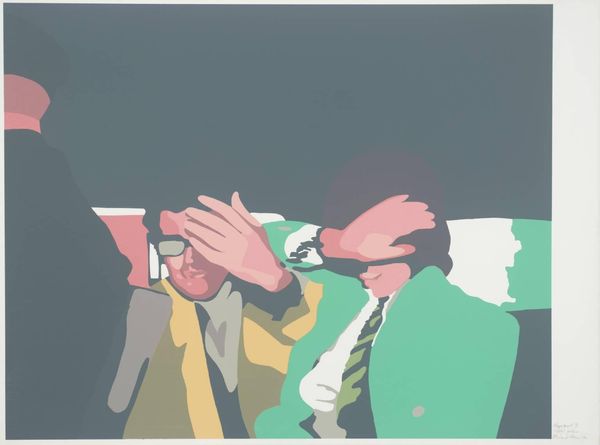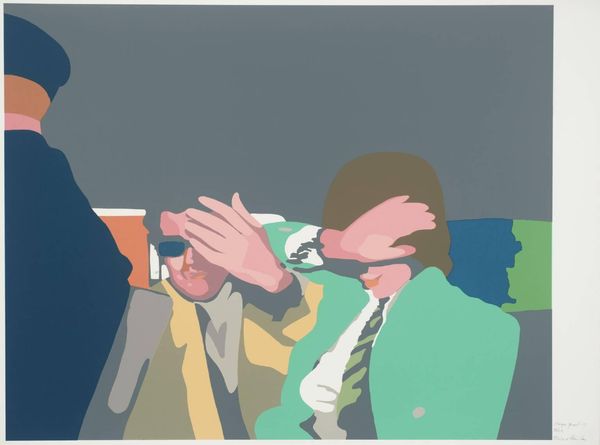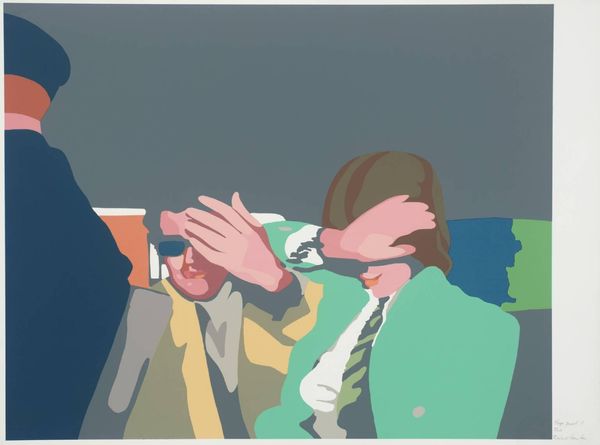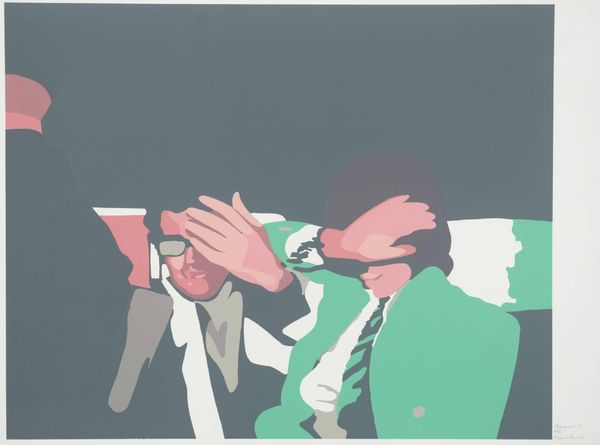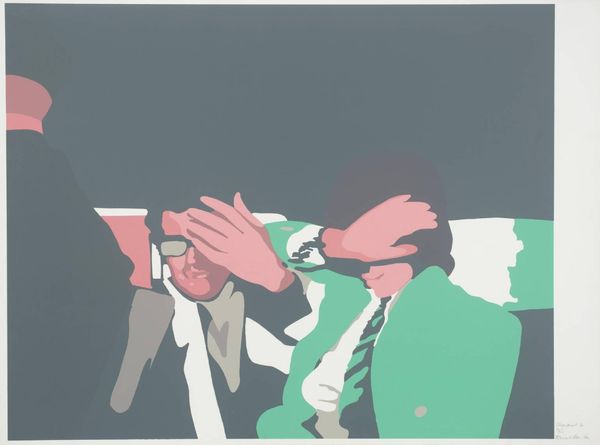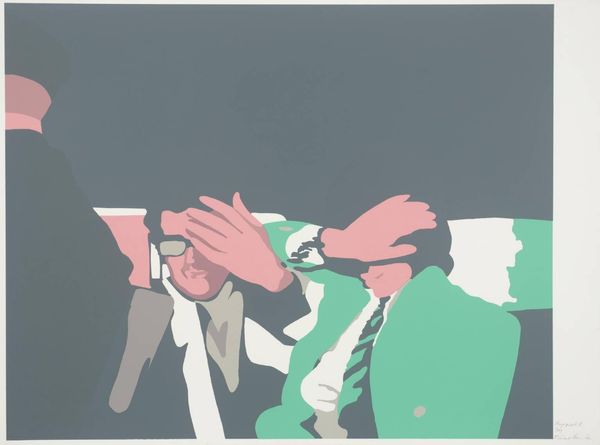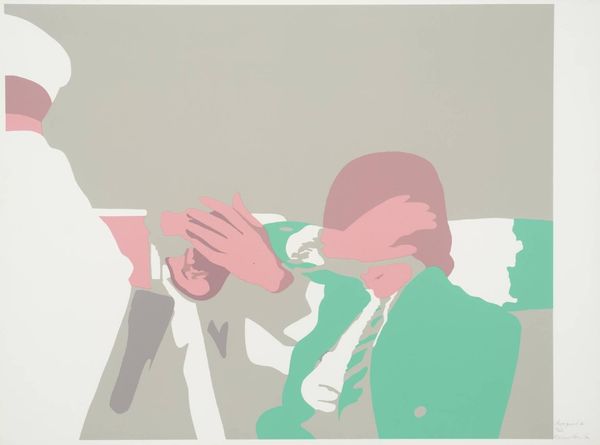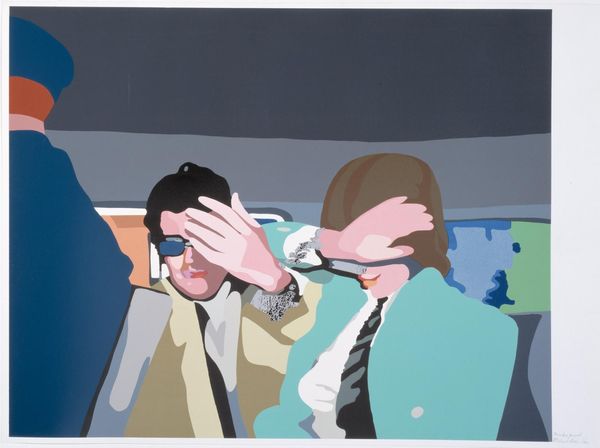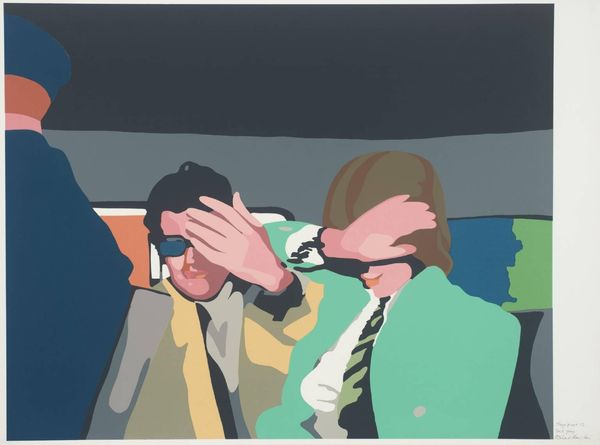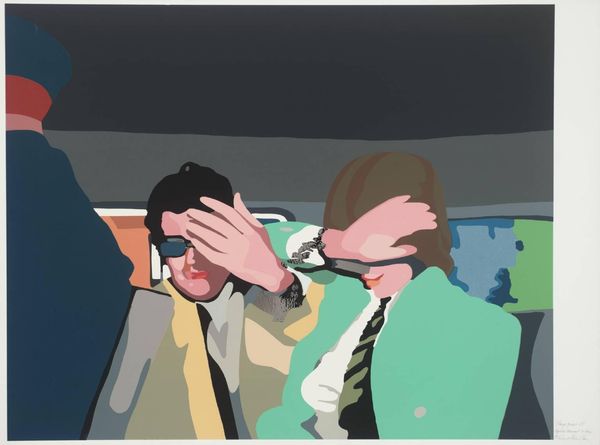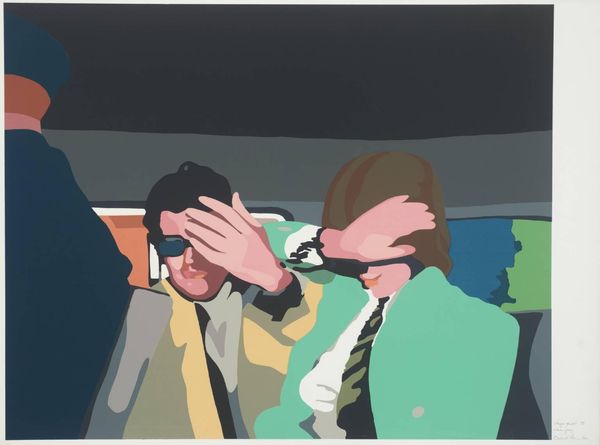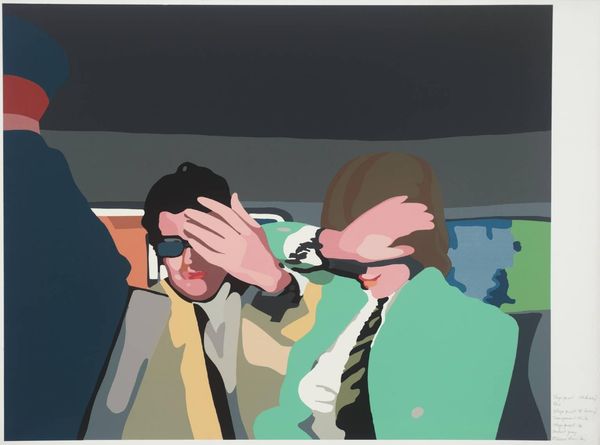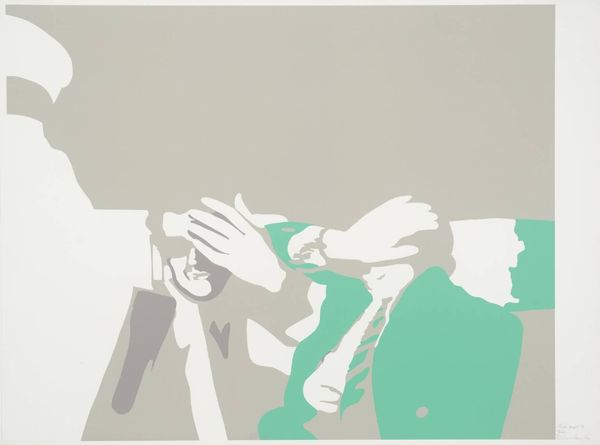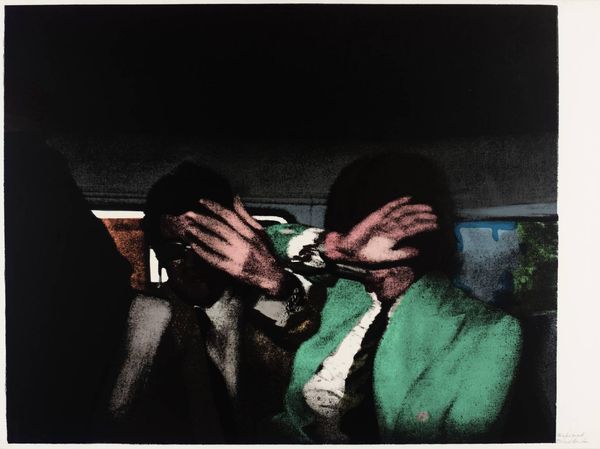
Dimensions: image: 682 x 857 mm
Copyright: © The estate of Richard Hamilton | CC-BY-NC-ND 4.0 DEED, Photo: Tate
Curator: Richard Hamilton’s “Stage Proof 9” presents a strangely intimate yet obscured moment. What strikes you first about this piece? Editor: The overwhelming feeling of visual censorship. Two figures shielding their eyes, almost theatrically, from something unseen. Is it a critique of media spectacle, perhaps? Curator: It could be. Hamilton often played with the idea of mediated reality. The flat planes of color and the graphic quality remind me of screen printing, underscoring that sense of manufactured image. Editor: Absolutely. The figures, rendered in such a detached style, become almost archetypal, representing a collective refusal to engage with something disturbing or overwhelming. Curator: I think you nailed it. There's a tension between the mundane—these look like men in suits—and this dramatic gesture. It leaves you wondering what they’re shielding themselves from, doesn’t it? Editor: It does. It makes me think about our own culpability as viewers, in what we choose to see, and what we choose to ignore. Curator: Ultimately, Hamilton offers a mirror, challenging us to confront our own relationship with the overwhelming nature of modern imagery. Editor: Right. And prompting reflection on what aspects of reality we, too, might be tempted to obscure.
Comments
Join the conversation
Join millions of artists and users on Artera today and experience the ultimate creative platform.
tate 6 months ago
⋮
Release – Stage Proofs 1-13 and 16-19 (P02416-32; the series is incomplete) is a group of seventeen prints showing the process of building up colour to make the print Release (P04254). Each proof represents the successive addition of a screen, made from a hand-cut stencil, used to apply a particular colour. The completed print Release combines the seventeen colour screens, each used once, and the photographic black screen which has the texture of an imprint on canvas as well as the photographic halftone, used twice.
